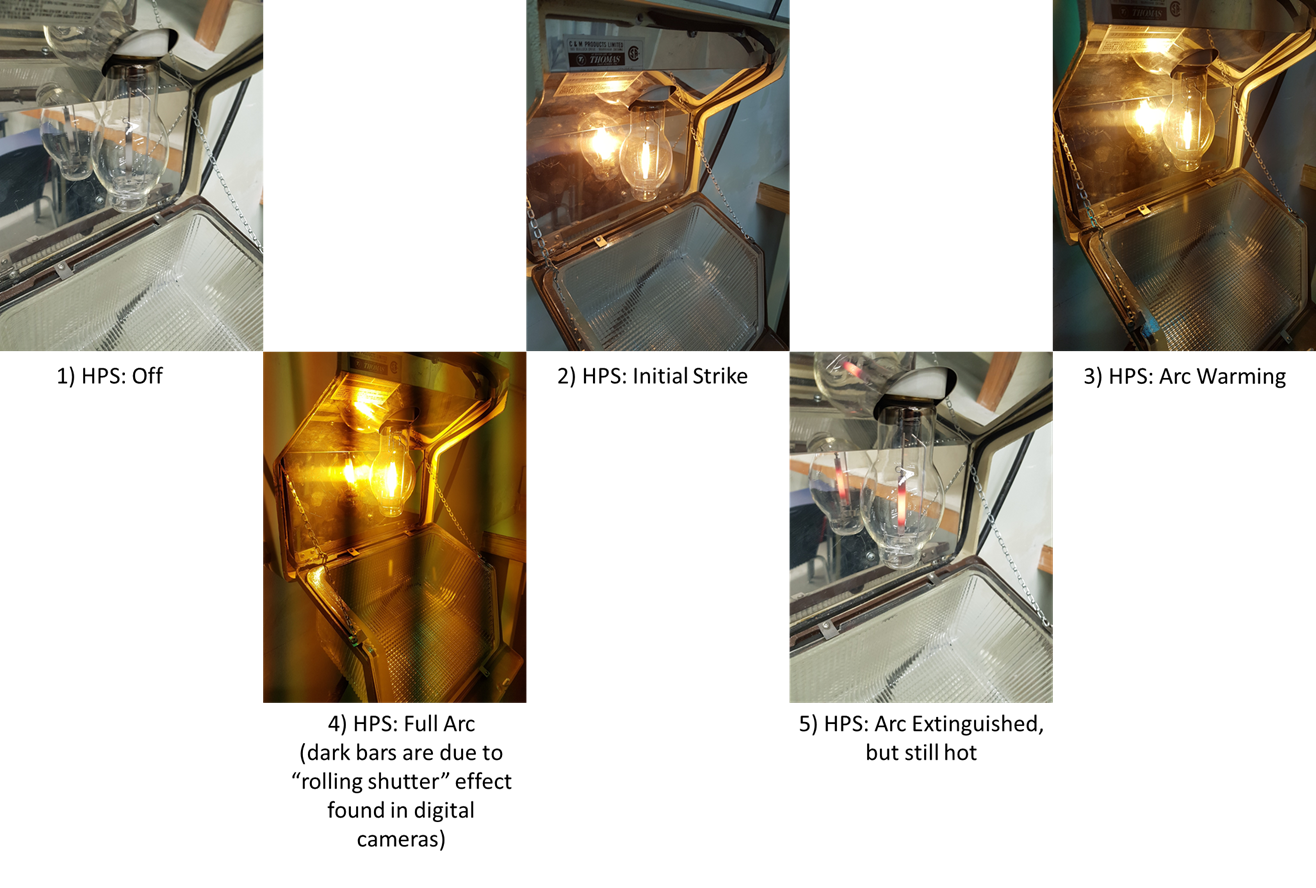33 High Pressure Sodium Lamps
The high pressure sodium (HPS) lamp is the most efficient of the HID lamps, averaging between 75 and 140 lumens per watt.

Like the metal halide and mercury vapor lamp, the HPS has an arc tube surrounded by an outer glass envelope, but the HPS arc tube is much longer and narrower, and is constructed from a heat resistant ceramic designed to withstand the stresses inside, including chemical breakdown from the presence of sodium.
The HPS lamp also lacks a starting electrode, instead relying on a starting aid in the ballast circuitry to provide an initial high voltage spike of 2.5 kilovolts or more. The arc tube contains a xenon starting gas and a small quantity of a sodium mercury mixture.
The HPS lamp has an initial strike-up time between three to four minutes. Once the initial arc is established through the xenon starting gas by the high voltage spike, the lamp vaporizes the mercury and sodium amalgam and quickly reaches full brightness. The HPS lamp can also operate in any burning position with no adverse effects.

Because the lamp operates with a relatively low operating pressure, its re-strike time is usually less than one minute when the arc is interrupted by a power outage.
Combined with a decent life span of between 20,000 and 24,000 hours and a high efficacy, HPS lamps are now the most widely used light source in new installations for various outdoor applications such as roadway, area, and security lighting.
Towards the end of the lamp’s usable life, it will begin to cycle on and off as the arc fails and then is slowly re-established. If an HPS lamp cycles on and off in this fashion, it is time to replace that lamp.

